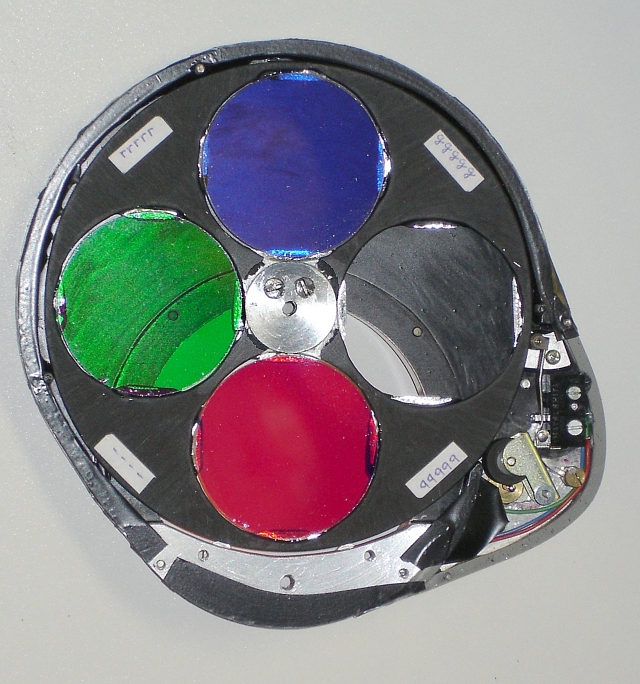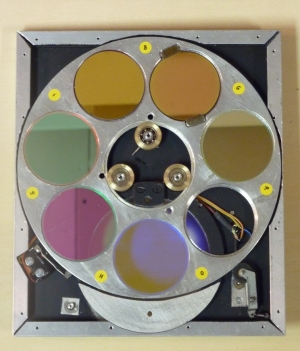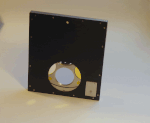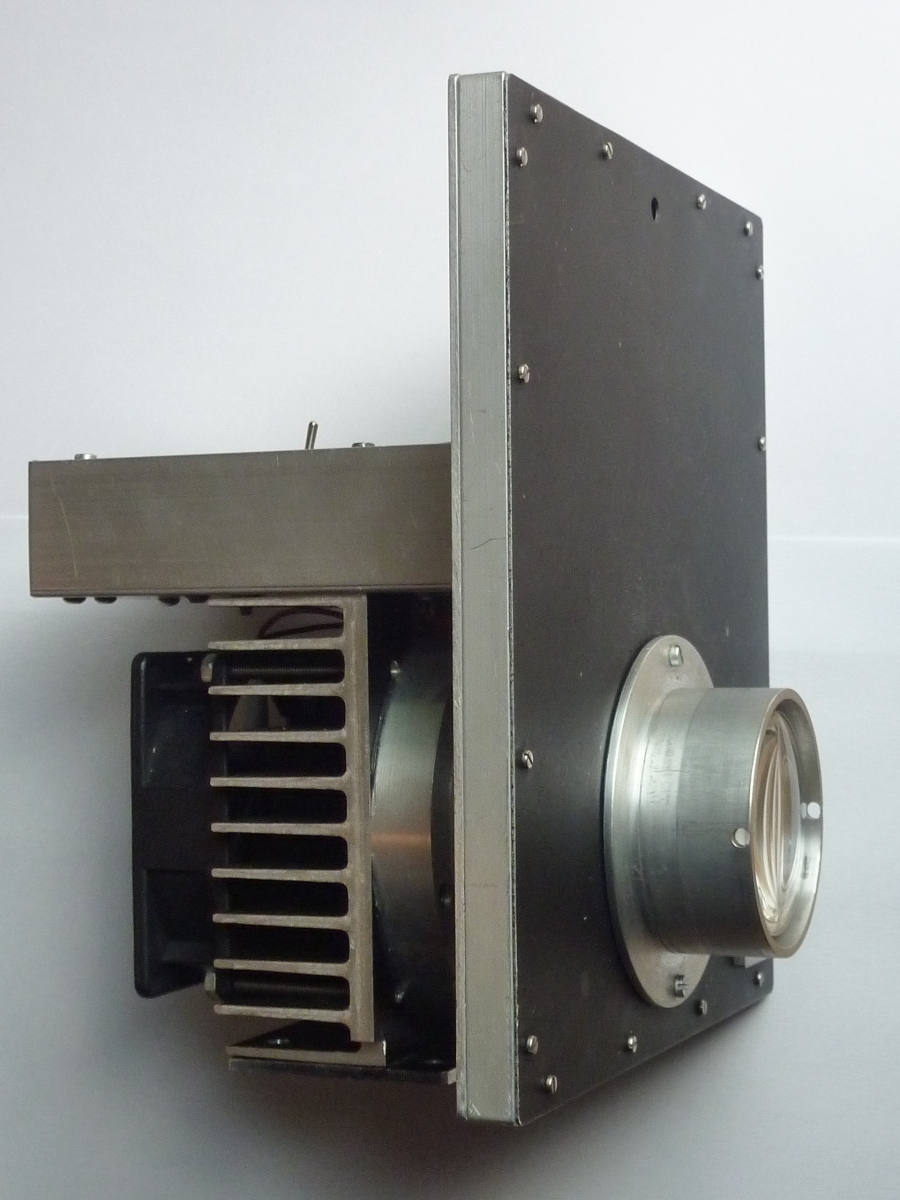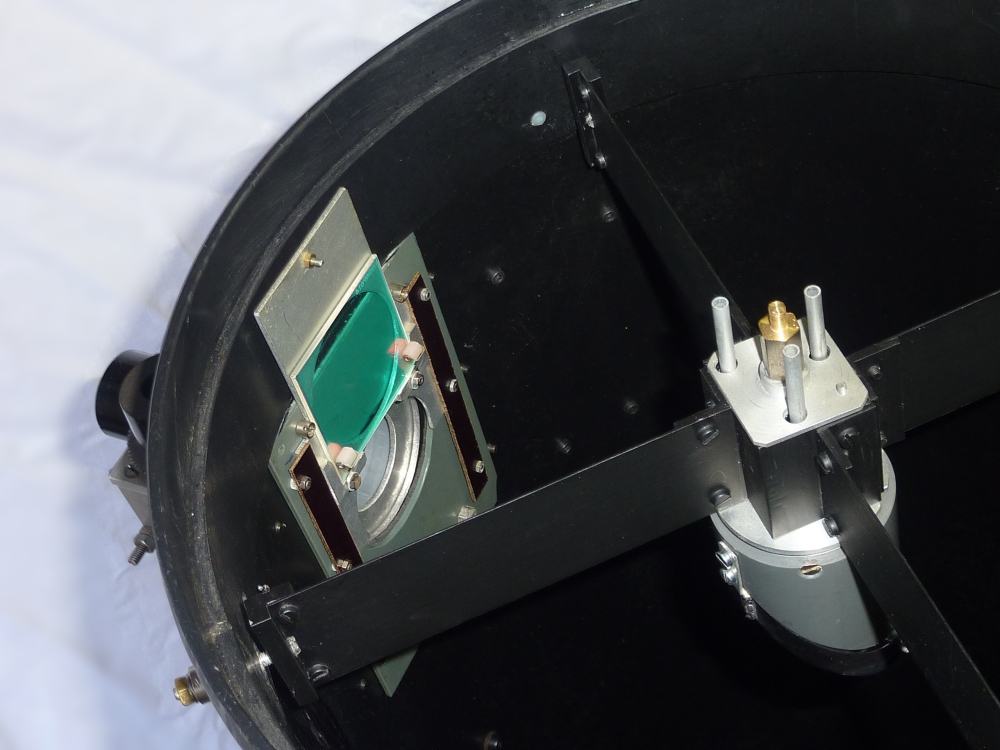|
For colour imaging with the first of my CCD-camera's I used a small MYC-filterwheel (Magenta, Yellow and Cyan), built inside of a 1.25" (31.75mm) manual focusing unit. See here for an impression of this first focuser. It also contains a shutter (it's shown without the neat cover!). When the chipsize substantially increased with my FTT1010-M camera (with a 17mm diagonal, requiring at least ~25mm clear filter aperture at f/D=5.7), I switched to a larger design, 4-position LRGB-filterwheel. It contains 50mm diameter RGB-filters from Edmund Optics. Since the focusing range of my focusers is limited and I (historically) chose for a focal plane close to the side of the telescope tube the extra pathlength introduced with the hardware of the filterwheel is as small as possible. I managed to construct the filterwheel such that the extra pathlength is below 5mm. The RGB-filters do not block infra-red light and as such an IR-blocking filter is used in front of the CCD-camera. With a growing interest in SHO-imaging and, also for the large FTF2020-M chip (35mm diagonal) I constructed a 7-position (i.e. LRGBSHO) filterwheel. The Baader Planetarium 2" SHO narrow-band filters were taken from their holder and have a diameter of 47-48mm. The S-II and O-III filters are glued into the pockets of the filterwheel. For the H-alpha filter I embedded two pieces of Neodymium magnet to the side of the pocket, keeping the filter in place with two small pieces of sheet metal. It can easily be taken out and used for other H-alpha photographing purposes (for instance with standard SLR-camera objectives). |
Drawings and images above show the designs of the 4- and 7-position filterwheels. From left to right:
|

